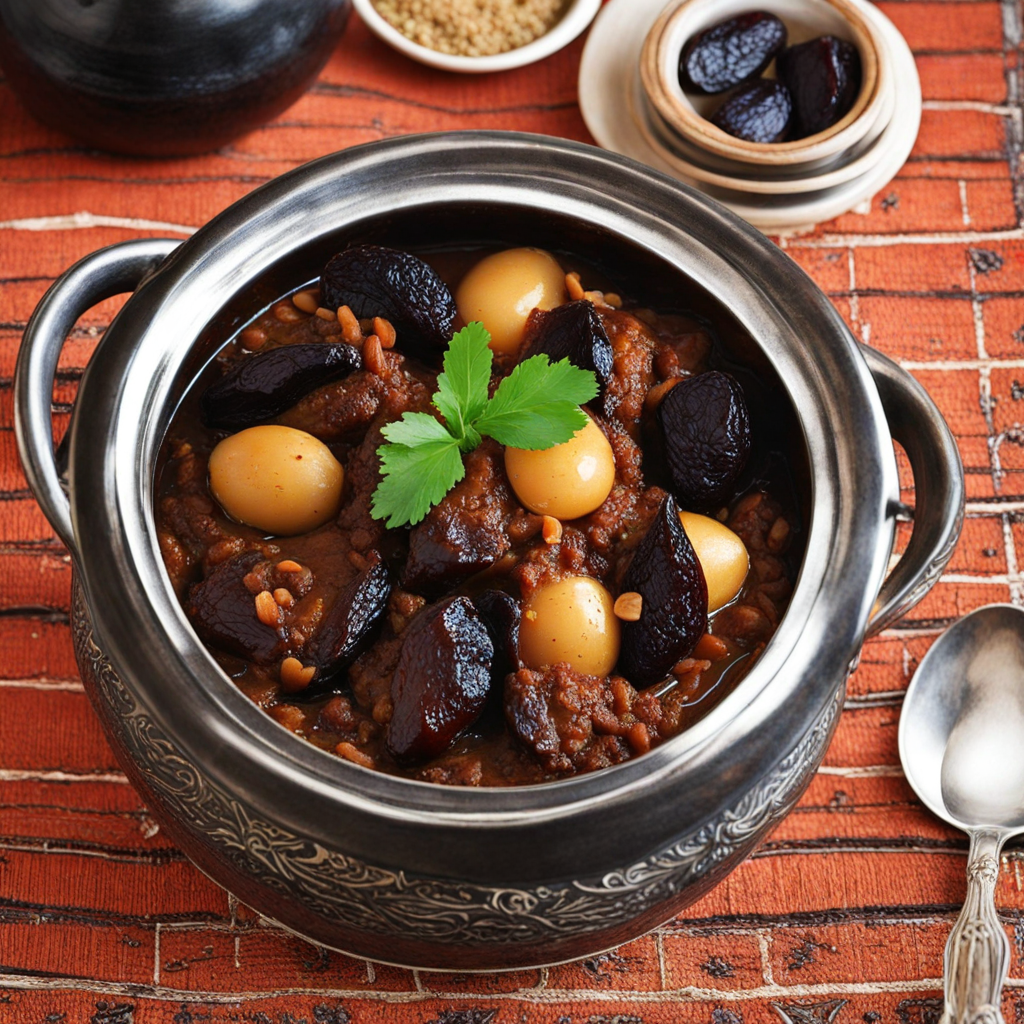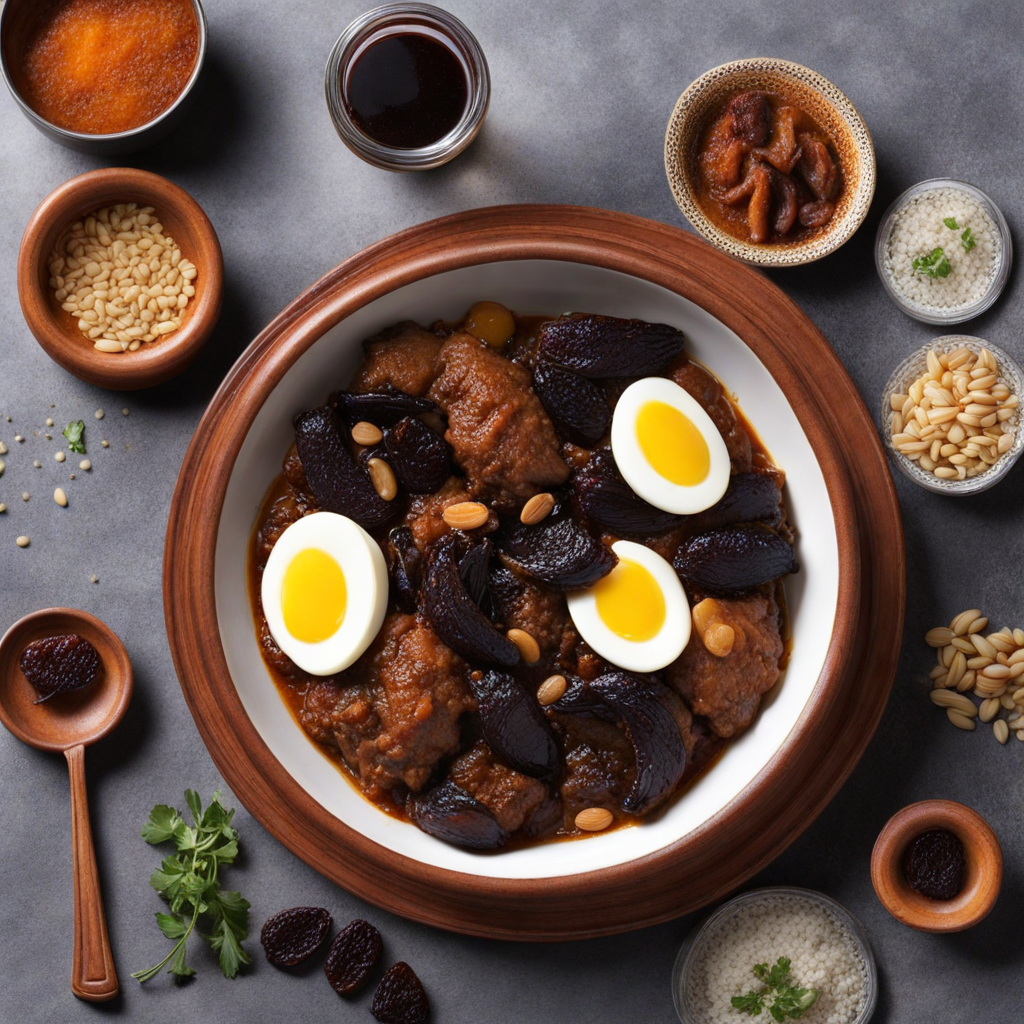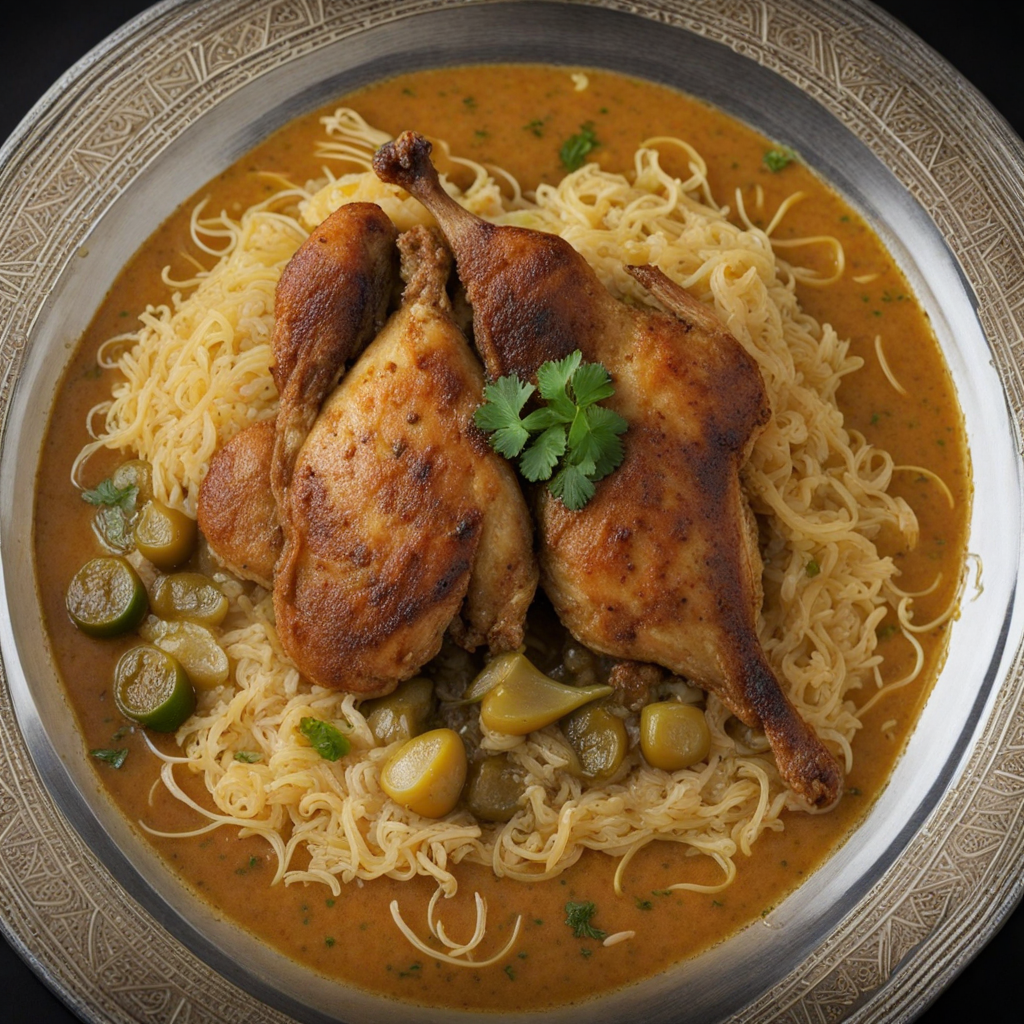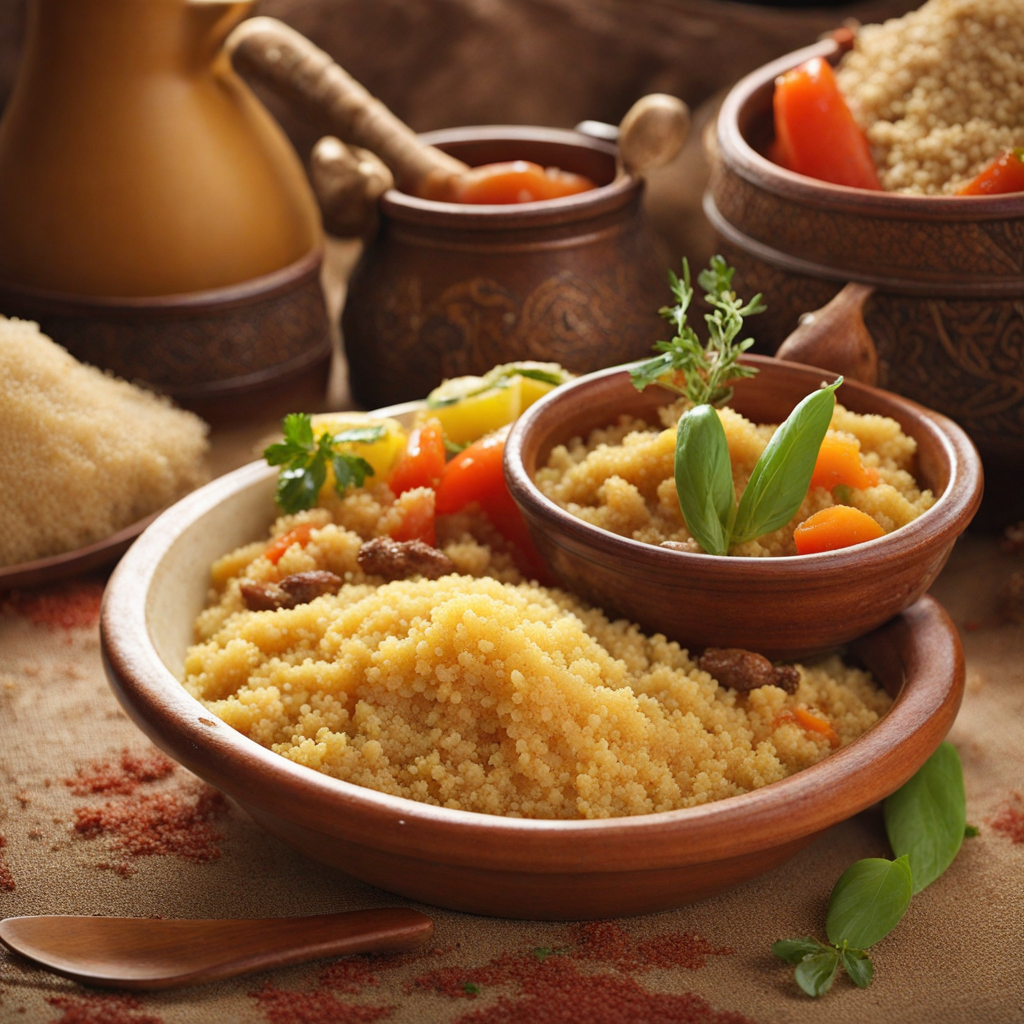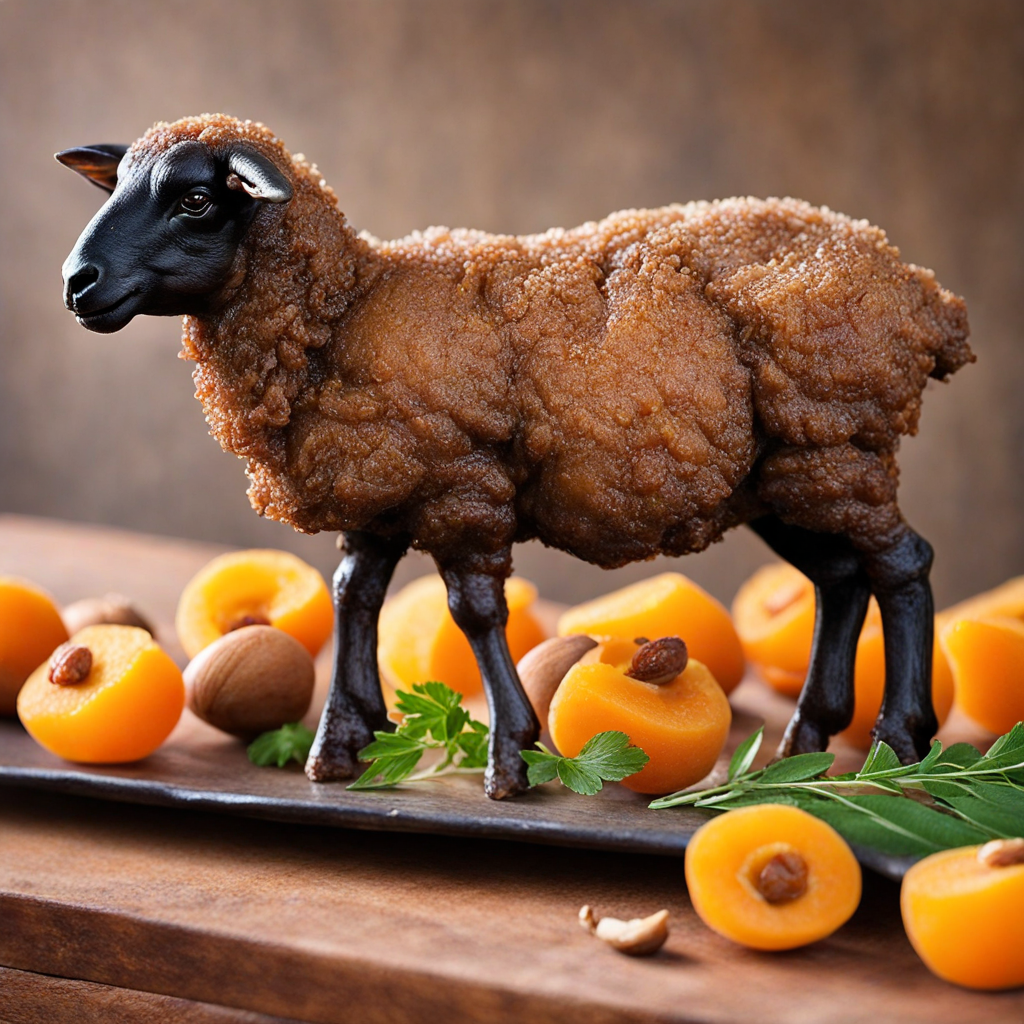Lamb Tagine with Prunes
Lamb Tagine with Prunes is a quintessential Moroccan dish that beautifully marries the rich flavors of tender lamb with the natural sweetness of prunes. The preparation starts with marinating the lamb in a medley of spices, including cumin, coriander, ginger, and cinnamon, which infuse the meat with deep, aromatic notes. As the lamb slowly simmers in a traditional tagine pot—an earthenware vessel designed for slow cooking—the meat becomes incredibly tender, soaking up the fragrant spices and the essence of the other ingredients, creating a dish that is both comforting and complex in flavor. The addition of prunes to the dish is what truly sets Lamb Tagine apart from other lamb preparations. Prunes bring a sweet, luscious quality that balances the savory elements and enhances the overall taste experience. As the prunes cook down, they become soft and caramelized, adding a delightful contrast to the hearty lamb. This combination creates a dish that is not only savory but also subtly sweet, inviting you to savor each bite and discover layers of flavor that unfold with each forkful. Served traditionally with couscous or warm bread, Lamb Tagine with Prunes is more than just a meal; it’s a feast for the senses. The vibrant colors of the dish, the intoxicating aroma that wafts from the tagine, and the harmonious blend of spices and sweetness all come together to create a culinary experience that transports you to the bustling markets of Morocco. Each element of the dish tells a story, inviting you to indulge in its rich cultural heritage while discovering a new and tantalizing taste.
How It Became This Dish
The History of طاجين لحم بالبرقوق: A Moroccan Culinary Treasure #### Origins of طاجين لحم بالبرقوق The dish known as طاجين لحم بالبرقوق, or lamb tagine with prunes, is a celebrated example of Moroccan cuisine, showcasing the country’s rich culinary heritage. The word "tagine" itself refers to both the dish and the earthenware pot in which it is cooked. The origins of tagine can be traced back to ancient Berber cooking techniques, which utilized slow-cooking methods to tenderize meats and enhance flavors. The Berbers, indigenous to North Africa, were skilled in utilizing the diverse ingredients of their environment, including lamb, spices, and dried fruits. The use of prunes in this dish reflects the broader Mediterranean practice of combining savory and sweet flavors, which is particularly prevalent in Moroccan cuisine. Historically, dried fruits such as prunes, apricots, and figs were prized for their ability to be stored for long periods, particularly during the harsh winters or in times of scarcity. #### Cultural Significance In Moroccan culture, food is deeply intertwined with social and familial bonds. Tagine dishes are often served during communal meals, where families and friends gather around a shared pot, breaking bread and exchanging stories. طاجين لحم بالبرقوق is frequently prepared for special occasions, such as weddings or religious holidays like Eid al-Adha. The dish embodies the essence of Moroccan hospitality, where the preparation and presentation of food are seen as an expression of love and respect for guests. The combination of savory lamb, fragrant spices, and sweet prunes creates a harmonious blend that symbolizes the balance of flavors in Moroccan cooking, signifying the richness of life and the importance of sharing. #### Ingredients and Preparation The primary ingredients of طاجين لحم بالبرقوق include lamb, prunes, onions, and a mix of spices such as cinnamon, ginger, and saffron. The preparation begins with marinating the lamb in a mixture of spices, which not only infuses flavor but also tenderizes the meat. The cooking process involves slow-simmering the lamb with onions, garlic, and a touch of honey, creating a luscious sauce. Prunes are added towards the end of the cooking process, allowing them to soften and absorb the flavors of the dish. The result is a rich, aromatic stew that is often served with couscous or crusty bread, absorbing the savory sauce and complementing the sweetness of the prunes. #### Evolution Over Time The evolution of طاجين لحم بالبرقوق reflects the broader historical and cultural changes in Morocco. The country has been a crossroads for numerous civilizations, including the Phoenicians, Romans, Arabs, and French, each leaving its mark on Moroccan cuisine. The introduction of spices through trade routes has profoundly influenced Moroccan cooking. Spices such as saffron and cinnamon, essential in طاجين لحم بالبرقوق, were once rare and highly valued commodities, contributing to the dish's luxurious appeal. During the Islamic Golden Age, the blending of flavors became more pronounced, with chefs experimenting with sweet and savory combinations that are now hallmarks of Moroccan gastronomy. In the 20th century, as Morocco gained independence from French colonial rule, there was a revival of traditional dishes. Chefs began to emphasize authentic Moroccan flavors, and طاجين لحم بالبرقوق saw a resurgence in popularity. It became not only a staple of Moroccan home cooking but also a favorite among tourists seeking to experience authentic Moroccan cuisine. #### Modern Interpretations Today, طاجين لحم بالبرقوق can be found in a variety of forms, with chefs experimenting while staying true to its roots. Contemporary interpretations may include the use of different meats, such as chicken or beef, and the addition of vegetables like carrots or sweet potatoes to enhance the nutritional value. Some modern chefs emphasize the use of locally sourced organic ingredients, reflecting a growing trend towards sustainable and health-conscious cooking. In addition, the global popularity of Moroccan cuisine has led to innovative adaptations of the dish outside of traditional contexts. In restaurants around the world, طاجين لحم بالبرقوق may be served with a fusion twist, combining Moroccan spices with international ingredients or cooking techniques. Nevertheless, the essence of the dish remains intact, celebrating the rich tapestry of flavors that define Moroccan culinary tradition. #### Conclusion طاجين لحم بالبرقوق is more than just a dish; it is a reflection of Morocco’s history, culture, and people. Its origins in ancient Berber cooking and its evolution through centuries of cultural exchange illustrate the dynamic nature of food as a form of expression. The dish embodies the spirit of Moroccan hospitality and community, where food is a centerpiece of social interaction and celebration. As Moroccan cuisine continues to gain international recognition, طاجين لحم بالبرقوق stands as a testament to the timeless appeal of traditional dishes that transcend borders. Whether enjoyed in a bustling Moroccan medina or a fine dining restaurant in Paris, this dish invites all who partake to explore the rich flavors and stories that make Moroccan cuisine a true culinary treasure.
You may like
Discover local flavors from Morocco


